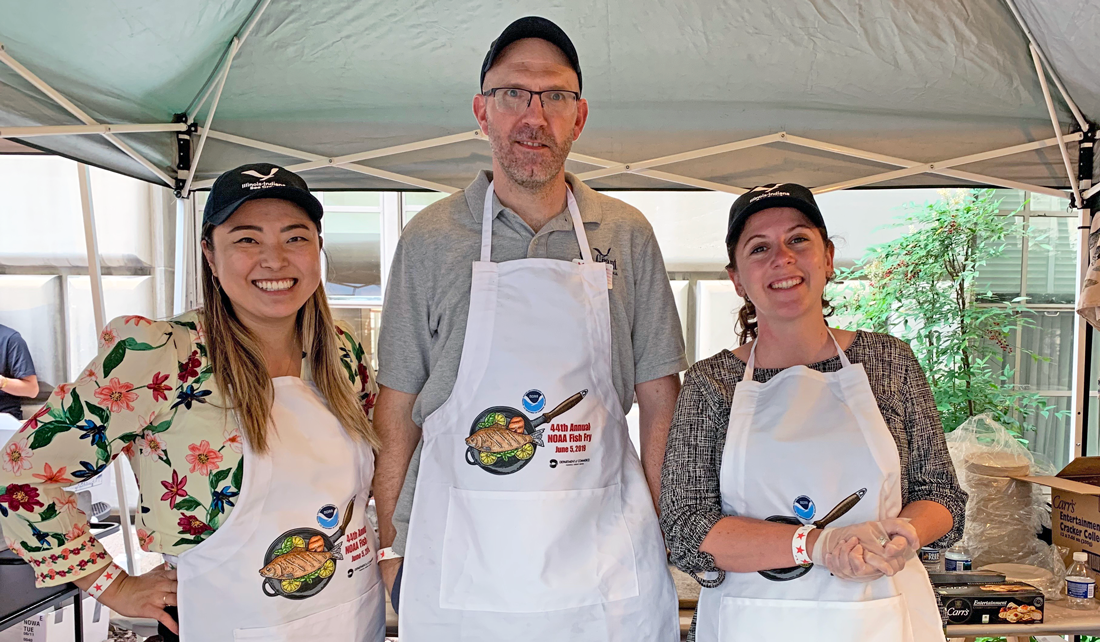
This is my last Illinois-Indiana Sea Grant (IISG) Director’s Blog post before I sign off as the program’s director. On July 14, I’m moving over to become the Head of Purdue’s Department of Forestry and Natural Resources (FNR).
I’m very happy to share that IISG’s assistant director, Dr. Stuart Carlton, will be taking over as director at that time. Stuart has a long record with Sea Grant, not only as part of Illinois-Indiana, but also with Florida and Texas. I’m excited to see how Stuart, along with the rest of the great IISG team, will advance the program in new and exciting ways.
Personally, I’m excited about the new position with FNR, but it is bittersweet to leave my role with IISG. It is worth noting that because IISG sits administratively within Purdue’s Dept of FNR, I won’t be completely disconnected from the program. However, I will no longer work as directly to support this important program as I have over the last 14 years.
I joined IISG in 2011 when former director Brian Miller asked Carolyn Foley and me to help guide IISG’s competitive research program. When Brian retired in 2018, I moved into the director role (and Carolyn became the sole research coordinator).
I’m proud of the many things we have been able to accomplish during this time. We have worked to expand the breadth of communities that IISG’s research, education, and outreach programs support. We have introduced and grown programming across a variety of topics, including aquaculture, real-time buoys, water safety, and coastal resilience. Our K-12, undergraduate, and graduate programs are stronger than ever. Finally, we have grown our competitive research program to address a variety of emerging issues, and more recently, developed a graduate student scholars program to support early-career researchers.
In early May, we held a six-year external review, and this was a very fulfilling opportunity to reflect on the many milestones that the IISG team and our great partners have achieved during that time.
Of course, IISG will continue with its important work, and with the summer season upon us, we have program updates to share with you.
First, it’s Lake Michigan’s turn to be the focus for both research and education. Through the Cooperative Science and Monitoring Initiative (CSMI), every year scientists from agencies and universities bring their attention to one of the Great Lakes to address research gaps and other priorities. IISG helps communicate science priorities and CSMI research results to resource managers and the public.
In tandem, this summer, 15 educators from Great Lakes states will spend seven days aboard EPA’s Lake Guardian research vessel to work directly with scientists engaging in Lake Michigan research, learn about Great Lakes issues, curriculums, and activities, and network with other educators. IISG and Wisconsin Sea Grant are hosting the Shipboard Science Immersion through the Center for Great Lakes Literacy.
Our aquatic invasive species team recently installed and opened for business boat cleaning stations at two northeastern Illinois locations—Chain-O-Lakes State Park and North Point Marina. These stations provide recreationalists with supplies and tools to wash their boats after a day on the water. Accidentally transporting organisms that are attached to boats and other equipment from one waterbody to another is a significant pathway for spreading invasive species.
And we can’t talk about summer without highlighting water safety. In addition to our buoys that provide continuous water and weather conditions, we have resources that include sensible tips for you and your family to enjoy a safer day at the beach. They can be found on the Lake Michigan Water Safety website and as part of the Stay Safe, Have Fun video series.
Finally, here are several upcoming IISG events:
- Join fellow 5–12 grade educators in the Indiana Dunes National Park on August 8-9 for a hands-on, overnight workshop titled Earth Systems: A Great Lakes Perspective, which will emphasize the important role of water in Earth’s systems with a special focus on the Great Lakes.
- Also, on August 9, IISG’s Invasive Crayfish Collaborative will provide educational resources at Rusty Rodeo, an annual event in North Aurora, Illinois, where families wade in the water to collect, identify, and remove invasive rusty crayfish.

